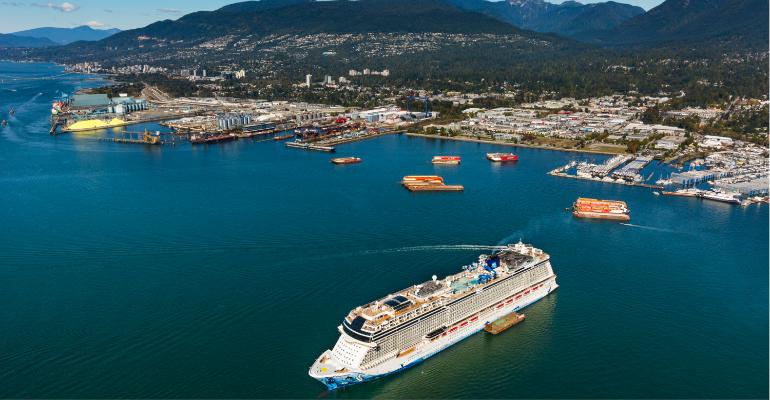There were 307 cruise ship visits last year, which represented a 6% increase compared to 2019. This growth highlights the industry’s confidence in the market for cruises from Vancouver, which is the only homeport to offer one-way and roundtrip itineraries through Canada’s scenic Inside Passage.
The Port of Vancouver has welcomed cruise passengers for more than 40 years and was recognized as “Best North American Homeport” in Cruise Critic’s 2022 Editor’s Picks Awards.
Collaboration between government, cruise lines and industry partners made the safe return of cruise possible. As pandemic restrictions continued to ease last year and people slowly returned to pre-pandemic travel habits, cruise ship occupancy levels gradually increased. For the season, occupancy levels averaged approximately 70%, peaking at 76% over the summer. Overall, approximately 815,000 passengers visited Vancouver in 2022 compared to 1.1 million in 2019. Based on preliminary bookings for 2023, if the industry operates in line with normal capacities, Vancouver could have a record number of ships and passengers next season.
Collaboration is also laying the foundation for sustainable growth in the future. Since 2009, the Vancouver Fraser Port Authority, the federal agency mandated to enable Canada’s trade through the Port of Vancouver, has been encouraging cruise ships to connect to shore power, which enables ships to shut down their diesel-powered auxiliary engines and plug into clean hydro-electric power. Last year, cruise ships connected to shore power at the Canada Place cruise terminal helped to reduce 5,000 tonnes of greenhouse gas emissions, up from 3,626 tonnes of emissions reduced in 2019.
In 2022, the port authority also signed on to a new commitment with leading global cruise lines, the Port of Seattle, City and Borough of Juneau, and industry partners to explore the feasibility of the world’s first cruise-led “green corridor” to reduce greenhouse gas emissions. This collaborative effort aims to support decarbonization efforts in the region, supporting the port authority’s vision for the Port of Vancouver to be the world’s most sustainable port.
About the Vancouver Fraser Port Authority and the Port of Vancouver
The Vancouver Fraser Port Authority is the federal agency responsible for the stewardship of the Port of Vancouver. The port authority is financially self-sufficient and accountable to the federal minister of transport, operating pursuant to the Canada Marine Act with a mandate to enable Canada’s trade through the Port of Vancouver, while protecting the environment and considering local communities. We oversee the administration, management and control of land and water within the jurisdiction of the port, which includes more than 16,000 hectares of water, over 1,000 hectares of land, and approximately 350 kilometres of shoreline. Located on the southwest coast of British Columbia in Canada, the Port of Vancouver extends from Roberts Bank and the Fraser River up to and including Burrard Inlet, bordering 16 municipalities and intersecting the traditional territories and treaty lands of several Coast Salish First Nations. As Canada’s largest and North America’s most-diversified port, the Port of Vancouver handles approximately 146 million tonnes of cargo worth $240 billion each year.
Copyright © 2024. All rights reserved. Seatrade, a trading name of Informa Markets (UK) Limited.
Add Seatrade Cruise News to your Google News feed.  |

